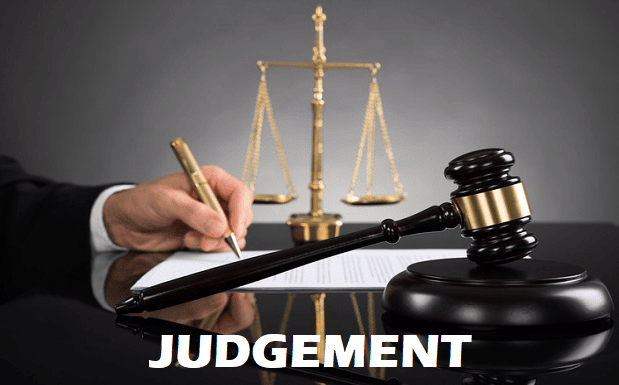Judgment | Criminal Law - CLAT PG PDF Download
| Table of contents |

|
| Object and Scope |

|
| Form and Contents of the Judgment under Section 353 |

|
| Language and Contents of Judgment |

|
| Reasons for Conviction |

|
Object and Scope
Chapter XXVII of the CrPC, 1973, focuses on Judgement. Although the Code does not provide a definition for "judgement," it is understood as the Court's final order.
Form and Contents of the Judgment under Section 353
According to Section 353 of the Code of Criminal Procedure (CrPC), the judgment in every trial conducted by a Criminal Court or a Court of original jurisdiction must be pronounced in open Court by the presiding officer immediately after the trial concludes.
Notice of the Judgment
Notice of the judgment should be given by:
- Delivering the entire judgment.
- Reading out the whole judgment.
- Reading out the operative part of the judgment and explaining its substance in a language understood by the accused or their pleader.
Preparation and Signing of the Judgment
After delivering the judgment:
- The presiding officer shall ensure it is taken down in shorthand, sign the transcript, and every page of the judgment.
- The date of delivery in open court should be written on the judgment.
Availability of the Judgment
Following the pronouncement of the judgment:
- The entire judgment or a copy shall be made available to the parties or their pleaders free of cost.
- If the accused is in custody, they shall be brought to hear the judgment.
- If the accused is not in custody, they must attend to hear the judgment unless their presence during the trial was waived and the sentence is a fine only or they are acquitted.
Validity of Judgment
No judgment from a Criminal Court shall be considered invalid solely due to the absence of any party or their pleader on the day or at the place notified for delivery, or due to any failure or defect in serving notice to the parties or their pleaders regarding the day and place of delivery.
Language and Contents of Judgment
Under Section 354 of the CrPC, it is stated that every judgment should be:
- In the language of the Court.
- Contain the points of determination and the reasons for the same.
Specification of Offence :The offence should be specified, along with the reasons for the determination. The offence must be mentioned in the Indian Penal Code (IPC) or any other applicable law under which the crime is committed and the punishment is awarded.
Acquittal of Offender :If the offender is acquitted, the judgment should specify the offence for which the acquittal is granted, the reasons for the acquittal, and clearly state that the person is now a free individual.
Uncertainty in Offence Specification : If the judgment is passed under the IPC and the judge is uncertain about the specific Section under which the offence is committed or the exact part of the Section, this uncertainty should be mentioned in the judgment. The judge should provide orders for both alternative situations.
Reasons for Conviction
The judgment should provide a proper reason for the conviction, especially in cases involving a sentence of life imprisonment. In the case of a death sentence, special reasons must be given.|
106 docs|25 tests
|
FAQs on Judgment - Criminal Law - CLAT PG
| 1. What is the purpose of Section 353 in the context of judgments? |  |
| 2. What are the essential elements that must be included in a judgment under Section 353? |  |
| 3. Why is it important for judgments to include reasons for conviction? |  |
| 4. How does the language used in a judgment affect its understanding? |  |
| 5. What are the consequences of failing to adhere to the requirements of Section 353 in a judgment? |  |















